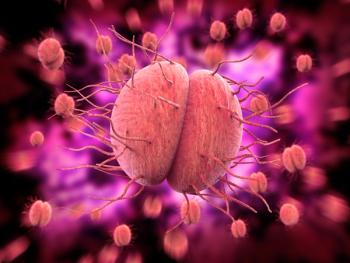
A case of refractory atopic dermatitis
A 12-year-old is brought into the office for a 10-month-old generalized itchy skin eruption.
A 12-year-old Caucasian girl is brought to your office by her parents for the first time. The young girl seems very quiet in the office, and you immediately note how thin she is. Her parents look exhausted, and the father tells you that you are the fourth doctor they have consulted. The young girl has a 10-month history of a generalized itchy skin eruption.
Review of systems reveals a loss of 20 pounds over the last two months. The adolescent spontaneously tells you how exhausted she is. When the young girl left for the washroom, her mother seemed ready to burst into tears, and reveals that her daughter has been "eating like a bird" for the last three months.
Not your typical rash
The rash is not classical for atopic dermatitis. First, the pruritus is all over the skin, and excoriations are not pronounced on the flexures as in atopic dermatitis. Second, atopic dermatitis rarely begins after 4 years of age, especially in a patient with no history of atopy (the triad of atopic dermatitis, allergic rhinitis, and asthma). Finally, atopic dermatitis usually responds, at least minimally, to skin hydration, topical corticosteroids, and antihistamines.
Given that you too are tired, you promise yourself to think about this patient's problem tomorrow. You have in mind a few ideas of what condition she could have: asteatotic eczema, generalized contact dermatitis, scabies infestation, pruritus associated with anorexia nervosa, acquired ichthyosis secondary to weight loss and food deprivation, neurodermatitis, atypical atopic dermatitis, and finally generalized pruritus secondary to a systemic condition.
Searching for an underlying disease that could explain her severe generalized pruritus and substantial weight loss, you order some laboratory tests. The next day, you receive the following results: a complete blood count shows a hemoglobin 10.4 g/dL (normal: 13.5 to 17.5 g/dL), with normal white blood cell and platelet counts. Serum iron and albumin are diminished at 3.4 μmol/L (normal: 3.8 to 27 μmol/L) and 3.0 g/dL (normal: 3.7 to 5.6 g/dL), respectively. Erythrocyte sedimentation rate is elevated at 50 mm/hr. To rule out alimentary trouble such as anorexia nervosa or bulimia, you ask the opinion of your psychiatrist colleague. He does not believe she has any trouble or behaviour suggestive of depression, anorexia nervosa, or bulimia.
You return to see your patient. She seems very tired, and cannot stop scratching her skin. The emollient and hydroxyzine that you prescribed yesterday have not helped at all.
Newsletter
Access practical, evidence-based guidance to support better care for our youngest patients. Join our email list for the latest clinical updates.










